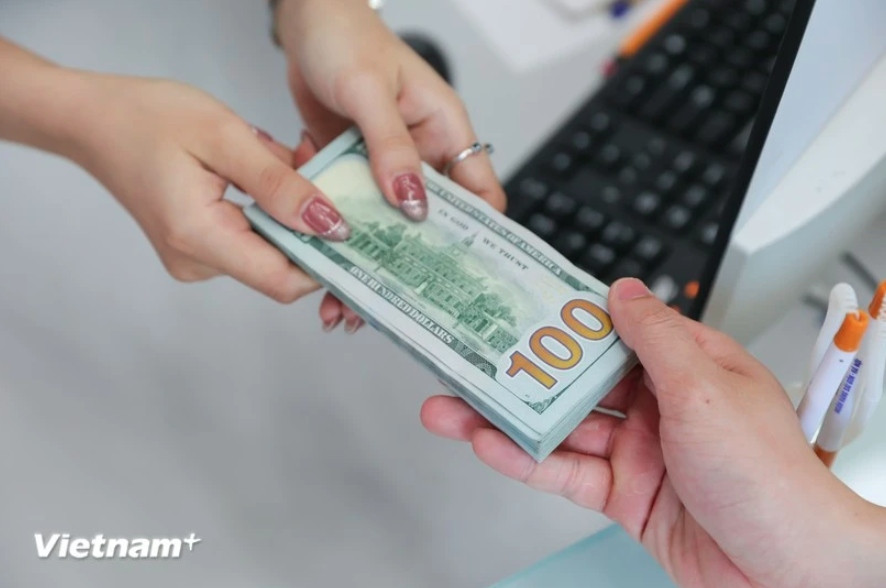
Current exchange rate fluctuations still fall within the controlled range of the State Bank of Vietnam, without necessitating usage of foreign exchange reserves for intervention, Nguyen Ba Hung, Chief Economist of the Asian Development Bank (ADB) in Vietnam, has said.

He noted that the US Dollar Index (DXY), which measures fluctuations of the greenback against six major currencies (EUR, JPY, GBP, CAD, SEK, CHF), has increased by about 3% since the beginning of the year, currently hovering around 106. Therefore, aside from other factors, the pressure leading to the USD's rise against the VND primarily stems from the greenback itself.
According to the expert, recent exchange rate fluctuations fall within the framework of policy management set by the State Bank of Vietnam (SBV). Additionally, the fluctuations are related to the seasonality of Vietnam's market. Typically, in the first quarter, there is an increase in demand for foreign currency, driven by the end of the financial year and needs such as investment and foreign currency hoarding by the public. These are baked-in market dynamics, he said.
Hung stressed that it is essential to recognise that exchange rate fluctuations are entirely normal. Exchange rate policies cannot remain static as they do not depend solely on one economy, but rely on overall developments in regional and global economies together.
In recent times, the SBV has made adjustments to some policy interest rates to lower the interest rate landscape for commercial banks.
The ADB economist recalled that the economic slowdown in the fourth quarter of 2022 had led the central bank to cut benchmark interest rates four times in the following year, with a total reduction of 1.5%. This reduction widened the gap between the interest rates of the US Federal Reserve and the policy interest rates of the SBV, which increased pressure on the domestic currency and reduced indirect investment capital flows, thereby raising external inflation risks. Consequently, the VND depreciated by 1.2% against the USD in 2023.
Following the reductions, commercial banks lowered average deposit interest rates by between 3% and 5% to stimulate credit growth. The SBV also encouraged banks to utilise alternative credit mechanisms to boost growth. Bank credit growth reached 13.5%, while total means of payment surged to 10.3% by the end of 2023.
ADB forecast that low domestic interest rates, fiscal policy measures, and wage increases will drive consumer services in 2024. Retail sales in the first quarter of this year increased by 8.2% compared to the same period in 2023. Despite slow economic recovery, this will promote logistics services, while more open visa policies will boost tourism. Overall, the service sector is projected to grow by 7.7% in 2024. Global demand for agricultural products and free trade agreements will continue to support farm produce exports.
Monetary policy will pursue a dual objective of price stability and growth, even with constrained policy space. This year’s anticipated global economic slowdown may moderate global oil prices, thereby reducing inflationary pressures. Average inflation in the first quarter decreased to 3.8% compared to more than 4.2% in the same period last year. Inflation is forecast to slightly rise to 4% in 2024 and 2025. Although projected inflation remains below the target range of 4%-4.5%, short-term pressures still exist due to geopolitical tensions and disruptions in global supply chains.
VOV